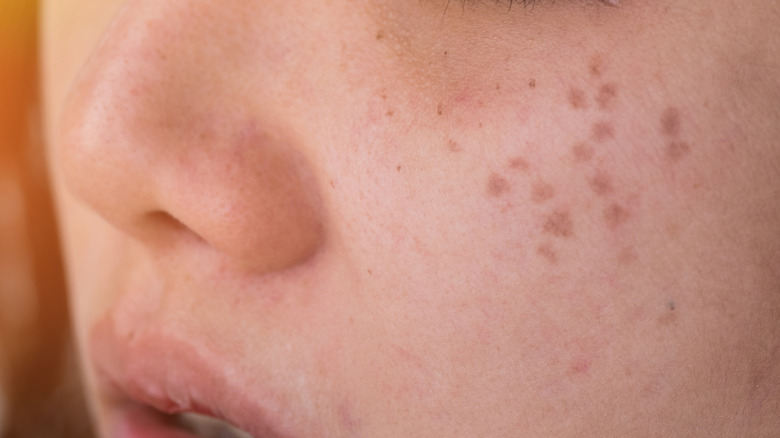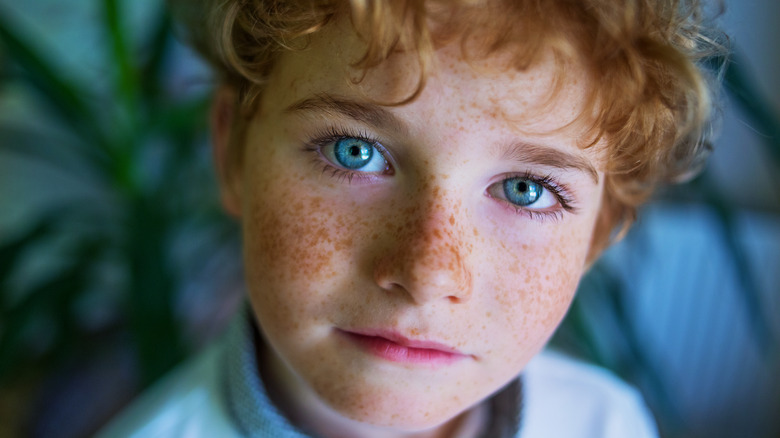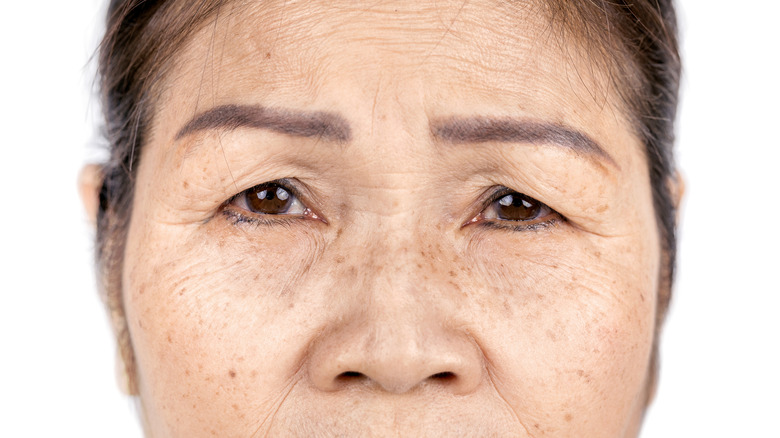What Are The Different Types Of Freckles?
Freckles — are they a blessing or a curse? For many of us, they are just part of life, something that we've lived with since we were tiny, and if asked to describe our overall color scheme, we'd be tempted to answer "polka dotted." While many people consider freckles to be cute, others aren't so thrilled with them. As a number of ancient folk remedies will attest, people have tried all manner of things through the years rid to rid themselves of unwanted freckles. In centuries past, freckle-faced Irish lads and lasses resorted to rubbing themselves with bulls' or hares' blood (via Pioneer Thinking), while another unpleasant old-time remedy involved applying a lemon juice/buttermilk mix to your face with a live frog! Ancient Romans used crocodile entrails, although as an added bonus, these were said to serve as a skin whitener, as well. Germans, on the other hand, preferred washing their faces in the rainwater that collected on tombstones.
Luckily we live in more body-positive times when it's easier just to embrace the spots we've got. Did you know, though, that there are two different kinds of freckles? According to Healthline, one type of freckle develops very early in life, while the other is more likely to show up in middle age.
If you were a freckle-faced kid, you've got ephelides to thank
No-one is born with freckles. That's because, as dermatologist Rachel Nazarian tells Marie Claire, "Freckles are absolutely always from sun exposure." The type of freckles known as ephelides can show up by the time you're 2 years old. They are far more common in light-skinned people, particularly blondes and redheads, than they are with those who have darker hair or skin. As Healthline explains, melanin, the pigmentation that gives color to our skin, occurs in 2 main types in humans: eumelanin and pheomelanin. Eumelanin protects from UV rays and leads to darker overall coloring, while pheomelanin results in lighter coloring, no UV protection, and freckles.
The ephelides type of freckles are usually light brown or slightly reddish in color, 1 to 2 millimeters in size, and tend to be located on the chest, arms, and neck as well as on the face. While you may well have freckles year-round, you might notice that your freckles tend to be considerably darker in the summertime. In fact, by darkening your skin, at least in tiny little patches, your freckles are helping to protect it against UV rays. In the wintertime, having done their duty, your freckles will likely become lighter again, but they probably won't disappear altogether. They may, however, start to fade as you grow older, which is why it's more common to see kids with an over-abundance of freckles than it is to see freckle-faced 30-somethings.
Solar lentigines are more likely after 40
Solar lentigines are, as their name implies, also caused by the sun. In fact, while the freckles that develop in adulthood are likely to be solar lentignes, not all solar lentignes are freckles. The term refers to any patch of sun-darkened skin that appears after childhood, but the category encompasses sunspots and age spots as well as freckles. While solar lentignes are most common among people of Caucasian descent, DermNet NZ says that not only light-skinned people but those with darker skin tone are prone to developing this type of freckle. We typically start to develop solar lentignes around the age of 40, but it is not unknown for them to occur in younger people, as well.
Healthline describes solar lentignes as being 2 millimeters or larger in size and ranging from yellow to dark brown in color. They can be found on the back and the shins as well as on the face, chest, and arms, and unlike ephelides, they don't tend to fade much with the seasons or the years. It's not easy (or advisable, really) to get rid of this kind of freckle, but it is important to distinguish between these harmless patches of darker skin and the more malignant types of skin discoloration that may signal the onset of skin cancer.


